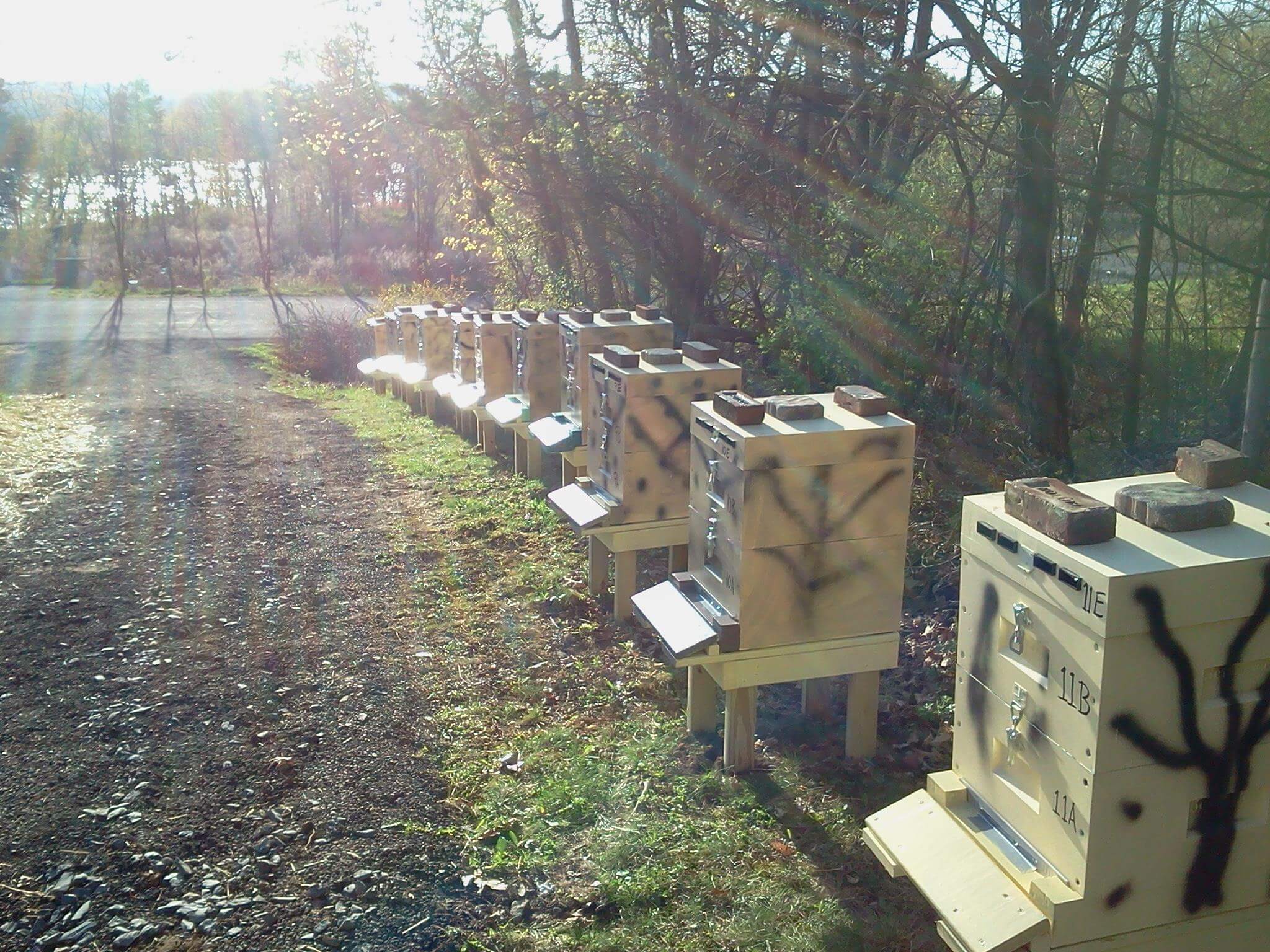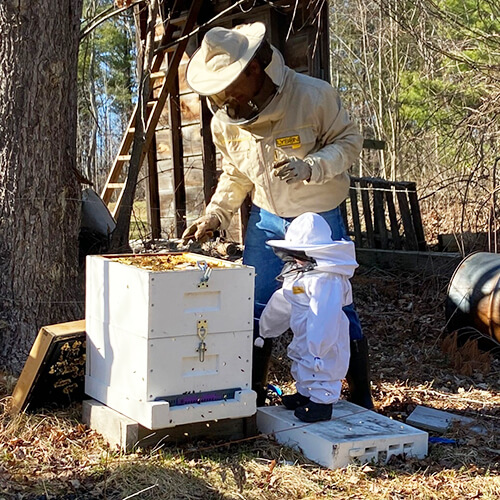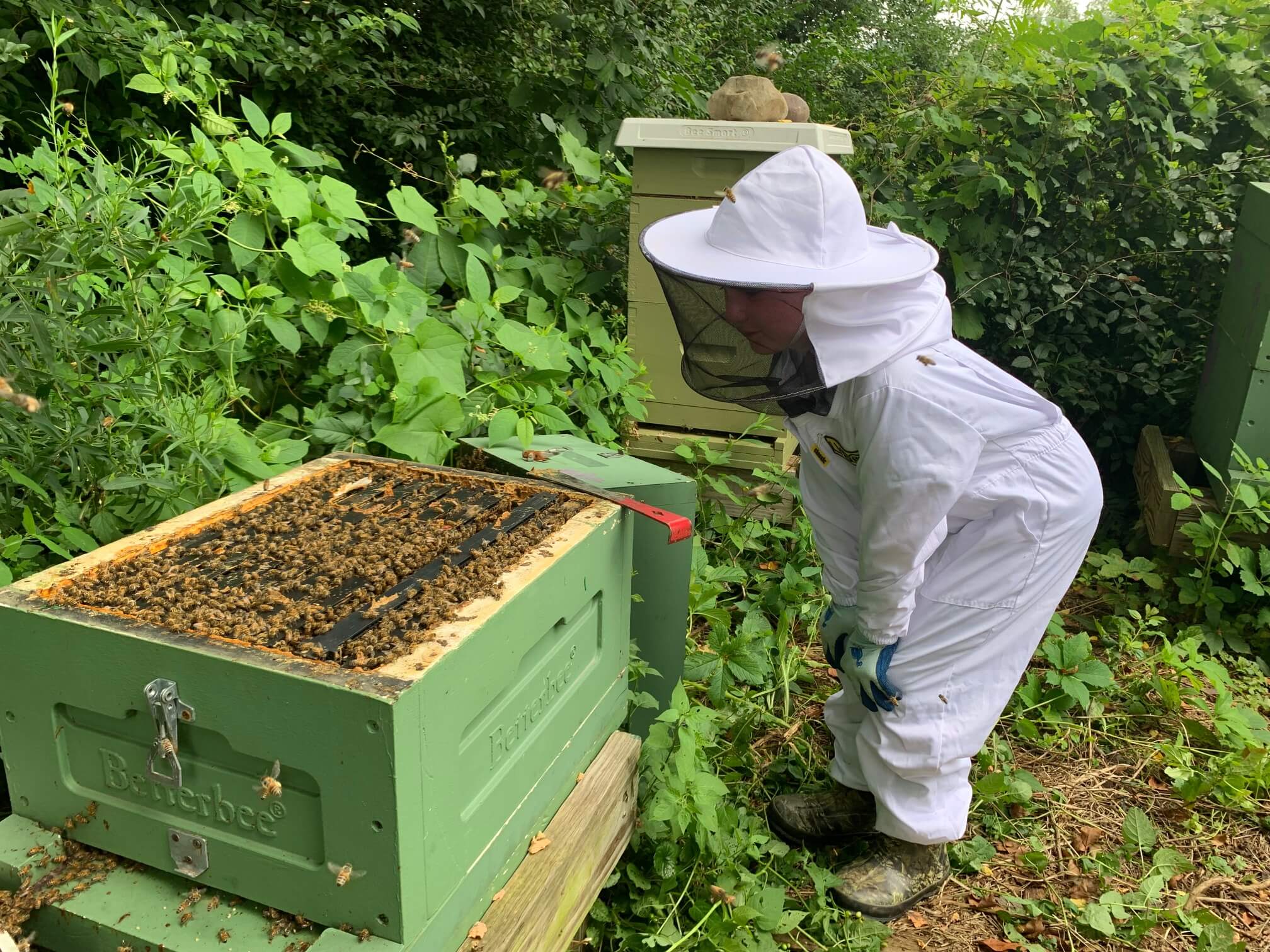
Lyson 10 frame hives are one of the more popular polystyrene options on the market due to their durability and sturdy latch system.
Take one styrene molecule and connect it to another one, and another, and so on, and you'll wind up with a long chain of "polystyrene." Polystyrene with lots of air trapped inside it, known as "expanded polystrene," is used to make all sorts of products. But why on Earth would you want a bee hive made of polystyrene?
Polystyrene hives offer excellent insulation
The chief benefit of a polystyrene hive is the excellent insulation that it offers to the bees inside. You can think of a bee colony as a living climate control system: They heat their home by shivering their flight muscles, and they cool it by spreading water on the combs and then evaporating it with their wings. Heating is obviously most important in the winter when the colony's ability to create and preserve heat is a matter of life or death. But even in the summer, bees will heat their brood nest on cool evenings to make sure that the developing brood is always kept at precisely 95 degrees F.
If you wanted to keep your home at 80 degrees all winter you could, but without good insulation you'll burn a lot more heating fuel to do it. The same is true for a bee colony, whose heating fuel is honey. A colony in a poorly insulated box will need more honey or syrup to stay warm. A polystyrene hive has an insulation R-value of around R6, while a wooden hive has an R-value of around R1.2, because much more heat will pass through the wall of the wooden hive compared to the polystyrene. This is why beekeepers in cold regions will often add vinyl hive wraps or insulation blankets around their wooden hives to prepare them for winter. Such extra work is not needed for a polystyrene hive, because the insulation is built right into the hive.
In hot weather, the insulation also helps the bees regulate their nest temperature. A well-insulated house has lower heating bills AND air conditioning bills, and a well-insulated hive needs less honey to heat, and less water (and water-collection labor) to cool. A natural bee nest in a hollow tree is usually surrounded by thick wooden walls that provide much more insulation than the thin lumber walls of a wooden hive. The material of a wooden hive is closer to a hollow tree cavity, but the insulation value of the polystyrene may actually be a closer match to the natural home of a bee colony.

Polystyrene hives are lighter than their wooden counterparts (but not quite light enough for this little girl to lift yet!).
An insulated hive is great in winter and in summer, but its value may be greatest in spring. When bees are raising brood and trying to boost their spring population, they struggle through the warm days and chilly nights. An insulated hive will hold a steady temperature more readily, and the bees will need to burn less honey to keep all of the brood at the right temperature, avoiding the catastrophe of a cold snap that kills a large portion of the developing spring brood. By supporting your colonies' spring build-up with insulation, you'll have more foragers available for the first spring honey flow.
Polystyrene hives weigh less than wooden hives
But won't a polystyrene hive just blow away with the first gust of wind, like an empty styrofoam cooler? Not at all! Polystyrene can be made into lightweight styrofoam, but the material can also be packed at a much higher density to make a firm, rigid hive material. Polystyrene hive boxes weigh less than wooden boxes, but not by all that much. If lifting a box is almost beyond the limit of your strength, a polystyrene hive may offer some improvement. (For more tips on reducing hive weight, check out this past article comparing the standard hive setup with using all medium hive boxes!) Despite being lighter than wooden boxes, polystyrene boxes are strong and durable, able to withstand poking and prying with your hive tool, and all the other abuses that we subject our hives to.
Polystyrene is durable and long-lasting
Because polystyrene is a synthetic material, it isn't prone to rot, fungus, termites, or other degradation like wood is. A polystyrene hive should last nearly indefinitely, while eventually, every wooden hive box will start to degrade. A hive full of bees can get quite humid, and that moisture can be absorbed by wooden materials and eventually contributes to a box's slow destruction. A polystyrene hive won't suffer from the same moisture-related damage.
"I hate painting, so maybe I'll get a polystyrene hive that doesn't need it..."

Painting extends the life of your polystyrene hive equipment.
Unfortunately, a polystyrene hive DOES still need to be painted. A coat of exterior grade latex paint (exactly what you would use on your wooden hives as well) protects the surface of the polystyrene from any moisture from rain or snow that may seep into it and then freeze in cold weather. More importantly, a coat of paint protects the polystyrene from the ultraviolet (UV) rays of the sun. Without the paint, the UV rays can cause the polystyrene to degrade.
So, which is better, polystyrene or wooden hives?
We can't say! Lots of beekeepers are happy with polystyrene hives, and lots are happy with wooden hives. We use both with our bees, and we're happy with the performance of both materials. A polystyrene hive is better insulated, but the wooden hive offers the bees a natural material to walk on. However, it's important to consider that most hives, no matter the materials, are quickly lined with a layer of propolis. A bee walking on the inside of a hive that's a few years old may only be touching propolis, and not any wood or polystyrene at all.
Intrigued by the idea of a high-tech polystyrene hive that will help your bees thermoregulate?
We carry three different kinds, and we like all three of them:
- The BeeMax Hive is made of four thick pieces of durable polystyrene. You can use only BeeMax parts for your whole hive, but an advantage is that it's also compatible with 10 frame wooden boxes - you can mix and match them without any gaps or structural problems, and the bees don't seem to mind at all. (Read this article on which polystyrene parts fit with the woodenware parts you might already have on hand!)
- The Lyson 8/9 Hive is an 8 (or 9) frame hive with ingenious interlocking boxes that always sit squarely on top of one another. It is only compatible with Lyson 8/9 boxes, but it offers a durable and very handsome hive.
- The Lyson 10 Frame Hive holds ten frames per box, and each box is held in place by rugged front and rear metal latches. Another hive that can't be mixed and matched with other equipment, the latch system eliminated the need for hive straps or bricks to hold your hive covers in place.
Want to stick with a traditional wooden hive? Go ahead! But in extremely hot or cold weather, you may want to consider adding insulation to your wooden hive to compete with the performance of a polystyrene hive.
Polystyrene testimonial from Paul Legrand, former Head Beekeeper at Thomas Jefferson's Monticello and James Monroe's Highland:
"I have been a beekeeper for 32 years. Roughly 20 years ago, I switched to using polystyrene hives, first in New York and now in Virginia. Since I started with them (the BeeMax brand) I have had extraordinary over-winter success.
Since 2010, I started and maintained the honey bees at Thomas Jefferson's Monticello and, starting in 2014, at James Monroe's Highland. I have had less than a 5% loss rate during the entire period. Part of the success may be a result of using ApiLife Var, too.
Strength-wise, the BeeMax hives have tremendous vertical strength. One example was a hive that had nine shallows on top of two deeps. All shallows were filled with capped honey. It produced 225 one-pound jars of honey that year, beating my previous record by 100 jars.
I see no reason to switch back to wooden hives."



